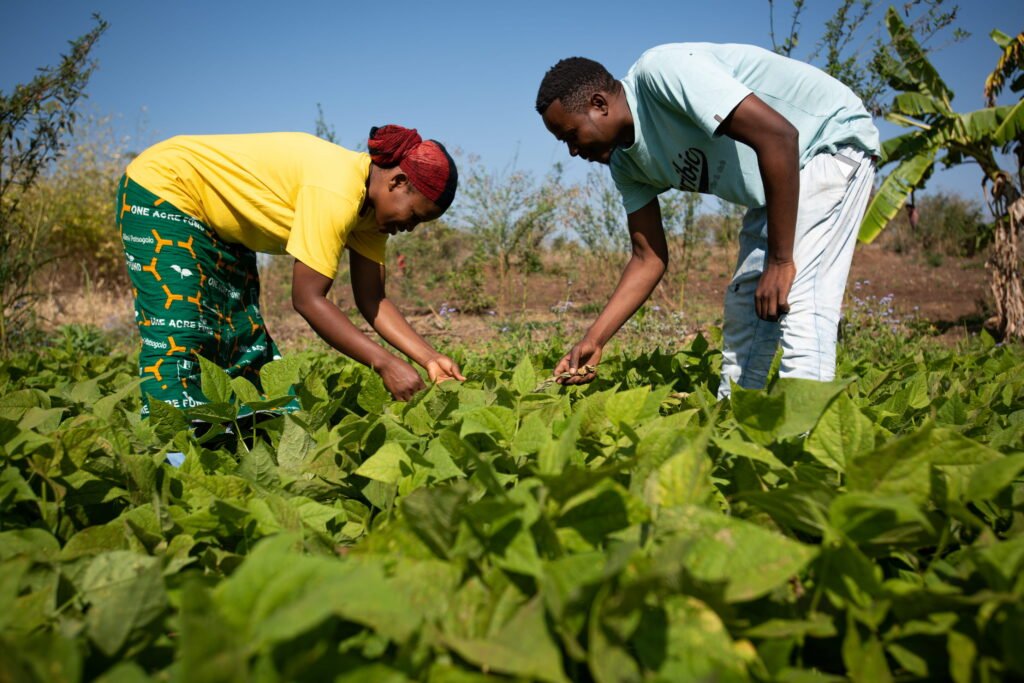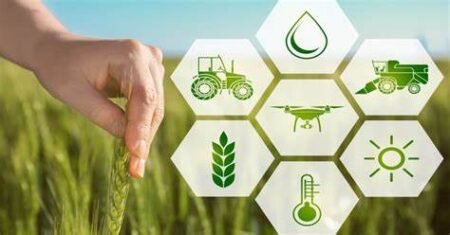In the second term of SSS 1 Agricultural Science, students will explore foundational concepts in crop production, soil formation, and rock weathering. This guide will provide a detailed breakdown of each topic, offering clear explanations, examples, and evaluation questions to aid students in grasping complex agricultural science concepts.
Week 1 and 2: Terminologies of Cultural Practices in Crop Production
Key Concepts:
- Cultural Practices in crop production refer to the various methods and techniques used to grow crops successfully.
Explanation:
- Tillage: The preparation of land for growing crops by plowing, harrowing, or cultivating the soil.
- Planting: The process of sowing seeds or planting young plants in the soil.
- Weeding: The act of removing unwanted plants (weeds) that compete with crops for resources.
- Fertilizing: Applying nutrients to the soil or directly to the plants to ensure optimal growth.
- Irrigation: Providing water to crops, especially in areas where rainfall is insufficient.
Example:
- In crop production, tillage is often done to loosen the soil before planting crops such as maize, making it easier for the roots to penetrate and absorb nutrients.
Reading Assignment:
- Study the different types of cultural practices and their importance in crop production, such as conventional vs. modern farming methods.
Evaluation Questions:
- What is tillage, and why is it important in crop production?
- Name three cultural practices used to improve crop yield.
- Define irrigation and explain its role in crop production.
Week 3: Husbandry and Cultivation of Some Selected Crops
Key Concepts:
- Crop Husbandry involves the care, management, and cultivation of crops to ensure their healthy growth and maximum yield.
Explanation:
- Maize: A major cereal crop that requires fertile soil, moderate temperatures, and adequate water.
- Rice: Grows best in areas with plenty of water and requires careful management of irrigation.
- Cassava: A tuber crop that is hardy and grows well in poor soils but requires appropriate care to avoid pests.
Example:
- Maize is commonly planted during the rainy season, as it requires a significant amount of water to germinate and grow to maturity.
Reading Assignment:
- Study the growing conditions for crops such as maize, rice, and cassava, focusing on climate, soil type, and water requirements.
Evaluation Questions:
- Explain the basic husbandry techniques for cultivating maize.
- What are the key factors to consider when cultivating cassava?
- Discuss how water management affects rice cultivation.
Week 4: Agricultural Ecology
Key Concepts:
- Agricultural Ecology is the study of the interactions between agricultural systems and their environment.
Explanation:
- Agricultural ecology looks at how farming practices influence and are influenced by the surrounding environment, including factors like soil health, water usage, and biodiversity.
- It emphasizes sustainable practices that protect the environment while maximizing agricultural output.
Example:
- Using organic fertilizers instead of synthetic ones to reduce the impact on the environment and increase biodiversity.
Reading Assignment:
- Study how different farming systems affect ecological balance, focusing on crop rotation, agroforestry, and the use of organic farming methods.
Evaluation Questions:
- What is agricultural ecology, and why is it important for sustainable farming?
- Explain how crop rotation helps in maintaining soil health.
- Discuss the environmental impacts of using chemical fertilizers.
Week 5: Rock Formation
Key Concepts:
- Rock Formation refers to the process through which rocks are created over time through natural processes.
Explanation:
- Rocks are classified into three main types: igneous, sedimentary, and metamorphic.
- Igneous rocks form when magma cools and solidifies (e.g., granite).
- Sedimentary rocks form from the accumulation and compaction of sediments (e.g., limestone).
- Metamorphic rocks form when existing rocks undergo changes due to heat and pressure (e.g., marble).
Example:
- Granite is an igneous rock formed when magma cools slowly deep beneath the Earth’s surface.
Reading Assignment:
- Study the different types of rocks and how each type is formed.
Evaluation Questions:
- What are the three main types of rocks, and how are they formed?
- Describe the process of igneous rock formation.
- Give an example of a metamorphic rock and explain how it forms.
Week 6: Rock Weathering
Key Concepts:
- Rock Weathering refers to the process by which rocks are broken down into smaller particles due to exposure to weather elements like water, wind, and temperature changes.
Explanation:
- Physical weathering involves the breaking of rocks into smaller pieces due to physical factors like wind, temperature changes, and water.
- Chemical weathering occurs when chemical reactions, such as oxidation or acid rain, break down rocks.
- Biological weathering happens when plants and animals contribute to the breakdown of rocks.
Example:
- Rocks exposed to constant wet and dry conditions may crack and break apart, a process known as physical weathering.
Reading Assignment:
- Study the different types of weathering and their effects on rock formation and soil development.
Evaluation Questions:
- Explain the difference between physical and chemical weathering.
- How do plants contribute to rock weathering?
- Describe the process of rock weathering in a tropical climate.
Week 7: Factors of Soil Formation
Key Concepts:
- Soil Formation is influenced by a variety of factors that contribute to the development of different soil types.
Explanation:
- The main factors that affect soil formation include:
- Parent Material: The type of rock or mineral from which the soil is derived.
- Climate: Temperature and precipitation affect the rate of weathering and organic decomposition.
- Organisms: Plants, animals, and microorganisms play a role in breaking down materials and enriching the soil.
- Topography: The shape of the land influences water drainage and erosion, which can affect soil composition.
- Time: Soil forms gradually over time as rocks and organic material are broken down.
Example:
- In a rainforest, the combination of high rainfall, warm temperatures, and abundant plant life leads to the formation of rich, fertile soils known as laterites.
Reading Assignment:
- Study how different factors, such as climate and organisms, influence soil development in various ecosystems.
Evaluation Questions:
- Name and describe three factors that influence soil formation.
- How does the parent material affect soil characteristics?
- Explain the role of microorganisms in soil development.
This comprehensive guide to SSS 1 Agricultural Science for the second term includes clear, detailed explanations of key concepts such as cultural practices in crop production, husbandry of selected crops, rock formation, and factors of soil formation. With practical examples and evaluation questions, students will gain a thorough understanding of the material and be well-prepared for exams.




